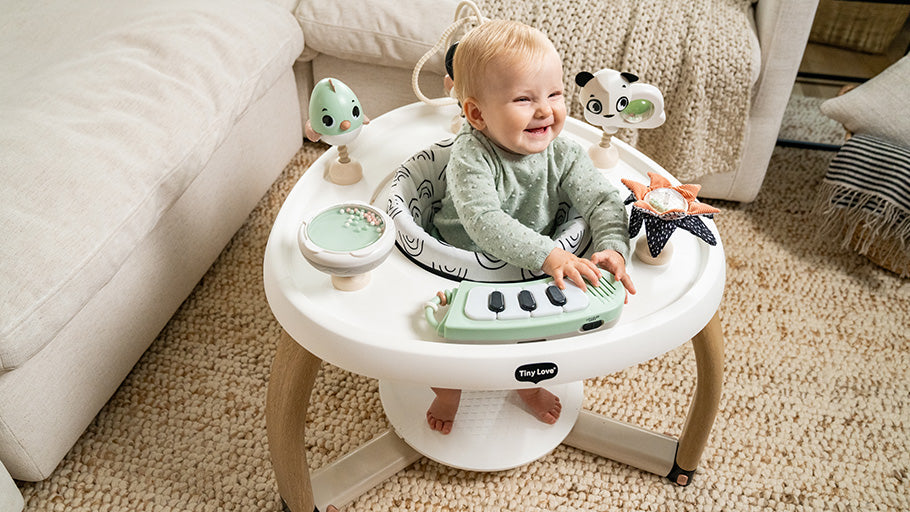Language: An Opening into your Child’s Inner World
By your baby’s first birthday, she is usually able to say at least one clearly identifiable word and to understand quite a few. Language opens up new and very effective channels of communication and allows you to hear what your child is thinking, feeling and desiring.The Cognitive Meaning of Speech
As regards cognition, verbal expression is evidence of the fact that your little one understands that objects are associated with a system of sounds that represent them. First words typically relate to familiar people (mommy, daddy), body parts (nose, hand), animals (dog, cat), and objects (ball, doll). At first, the sounds of a word are approximated but not verbalized accurately. You may hear “bo” instead of “ball” or “mah” instead of “mommy.” Sometimes, the sound may not even resemble the word it is meant to represent… Be patient, over time your baby’s pronunciation will improve and you won’t be racking your brains trying to decipher what she means.The Holophrase Stage
During this initial stage, children may use a single word to express an entire idea or concept. Saying “ball” can mean “here is my ball,” or “let’s find my ball.” This challenging single-word sentence style is referred to as a holophrase. In order to understand what your baby is trying to say, pay attention to the context and try to get hints from other forms of communication she uses – such as tone of voice, facial expressions, pointing etc.Understanding versus Expressing
It is not uncommon for toddlers at this stage to “collect” words they understand while pushing off their own verbal expression to a later stage. This means that non-verbal communication is still a very significant way for your baby to get her message across. She understands simple requests, such as “bring me the cup” and will soon understand more complex, two-part requests like “go to your room and get your teddy bear.”
Milestones
- Speaks first word at around 12 months.
- Speaks as many as four words at around 13 months.
- Understands and identifies many familiar daily objects.
- Responds to simple requests.
- Communicates desires and needs by pointing and other non-verbal gestures.
Tiny Tips
- Expand your baby’s single-word remarks to enhance his language skills and vocabulary. For example, if he points to the door and says “Daddy,” enrich this by responding “Yes, daddy just left the house.”
- Repeat simple words over and over again, like ball, car, more, etc. as well as sounds that represent objects or things, like “meow” for cat.
- When it is difficult to understand what your baby is trying to say, follow his lead. He may repeat a request and try to clarify it for you through a gesture, a change in his tone or a facial expression.
- If your baby uses non-verbal expression, such as pointing to something he wants, say it for him, and repeat it several times.



